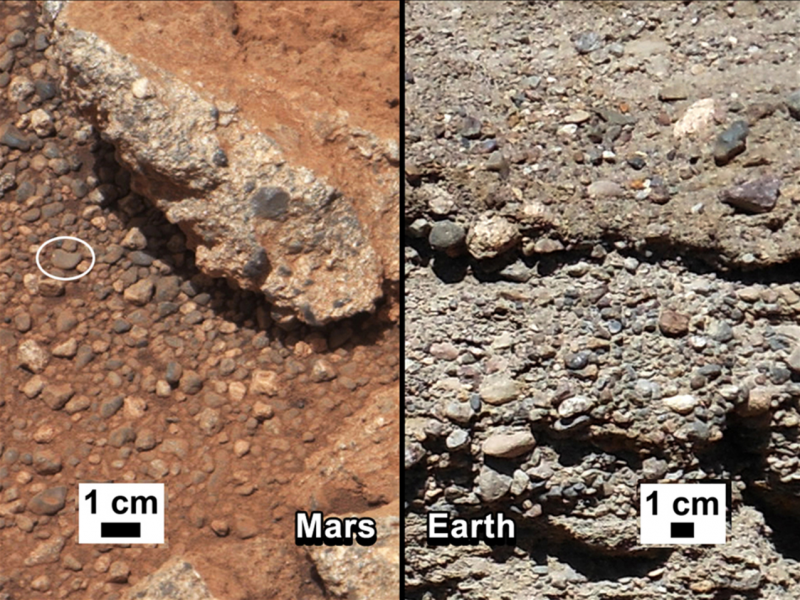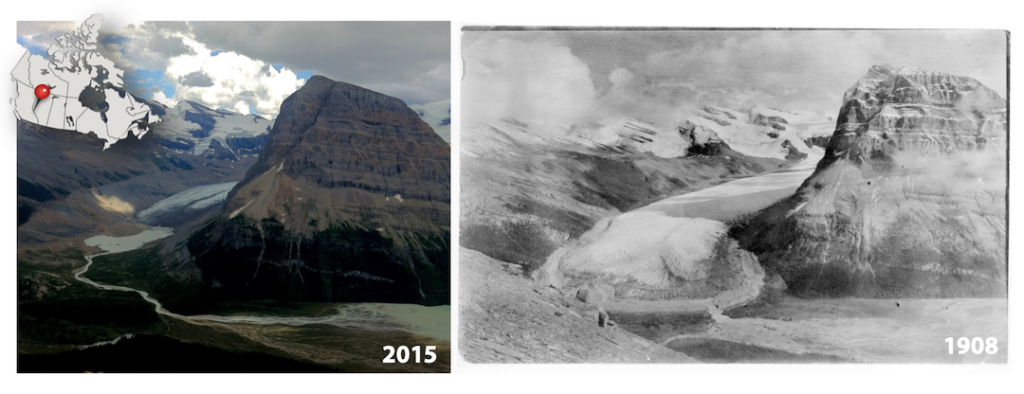1.1 What Is Geology?
The Study of Rocks?
Imagine that someone has just asked you what geology is. If your answer is, “It’s the study of rocks,” then you’re in for a surprise! While rocks are important to geology, some geologists don’t study rocks at all. Geologists might study water, climate, organisms in extreme environments, or environments where rocks might form in the future.
If your answer is “It’s the study of Earth,” you’d be getting closer. Geologists do study Earth—its interior and its exterior surface, the rocks and other materials around us, and the processes that formed those materials. They also study how Earth has changed over the vast time-span of its history, and how it might change in the future.
Even so, you’d still be missing the work done by geologists who study other planets or solid non-planetary objects in space. Perhaps reading this chapter will be the start to your career as the head geologist on a Mars survey crew locating water resources for a new colony…
Earth’s Geology Helps Us Understand Ancient Mars
These photographs are of the same type of rock, but one is on Mars (left) and the other is on Earth (right). On Earth this type of rock is formed when rapidly moving water carries broken pieces of rock, smooths them off, then drops them on a stream bed. By knowing how this rock forms on Earth, we can tell that Mars also had water flowing rapidly over its surface at some time in its history.

Geology Is a Science
Geological questions are investigated by collecting evidence, hypothesizing about what that evidence could mean, and finding ways to test whether those ideas make sense or not. Geological science is done with the same rigour as any other science, and this means that a lot of creativity is sometimes required to figure out how to test hypotheses. For instance, how do you test a hypothesis about what Earth was like 3 billion years ago? Some geoscientists test such hypotheses by trying to find modern-day environments that are similar to ancient Earth environments.
Geology is an interdisciplinary science. Geologists must understand and apply other sciences—physics, chemistry, biology, mathematics, astronomy, and more—in their work. Geoscientists often consult with or work with scientists in other disciplines.
An aspect of geology that is unlike most of the other sciences is the role played by the vastness of time. When geologists study the evidence around them, they are often observing the results of events that took place thousands, millions, and even billions of years in the past, and which may still be ongoing. Geologists study not only processes that happened long ago, but processes that happen at incredibly slowly. Changes in the shape of Earth’s surface might only happen at rates of mm to cm per year, but because of the amount of time available, tiny changes can result in expansive oceans forming, or entire mountain ranges being worn away.
Geological Time in the Canadian Rocky Mountains
The photographs below show changes that happened in the blink of an eye, geologically speaking. At the same time, they also illustrate the vastness of geological time.
The past 100 years. On the right of both photos is Rearguard Mountain, which is a few kilometres northeast of Mount Robson. Mount Robson is the tallest peak in the Canadian Rockies, at 3,954 m. The large glacier in the middle of the photo is the Robson Glacier. The river flowing from Robson Glacier drains into Berg Lake in the bottom right. The photo on the right was taken around 1908 by the Canadian geologist and artist Arthur Philemon Coleman, and gives an indication of how much the glacier has receded in the last hundred years due to rapid climate change.
The past two million years. This area—like much of Canada—has been covered repeatedly by glaciers over the past 2 million years. Those glaciers scoured away rocks to form the valley on the left.
500 million years ago. The rocks making up the mountains formed in ocean water over 500 million years ago. A few hundred million years later, a great collision between Earth’s tectonic plates pushed those rocks east for 10s to 100s of km, and 1000s of m upward.

How does the element of time make geology different from the other sciences, such as chemistry and physics?
Geology requires that we consider vast amounts of time, and think about the effects that accumulate over thousands, millions, or even billions of years.
References
Victoria University Library (2009) A. P. Coleman exhibition. https://library.vicu.utoronto.ca/apcoleman/index.htm

